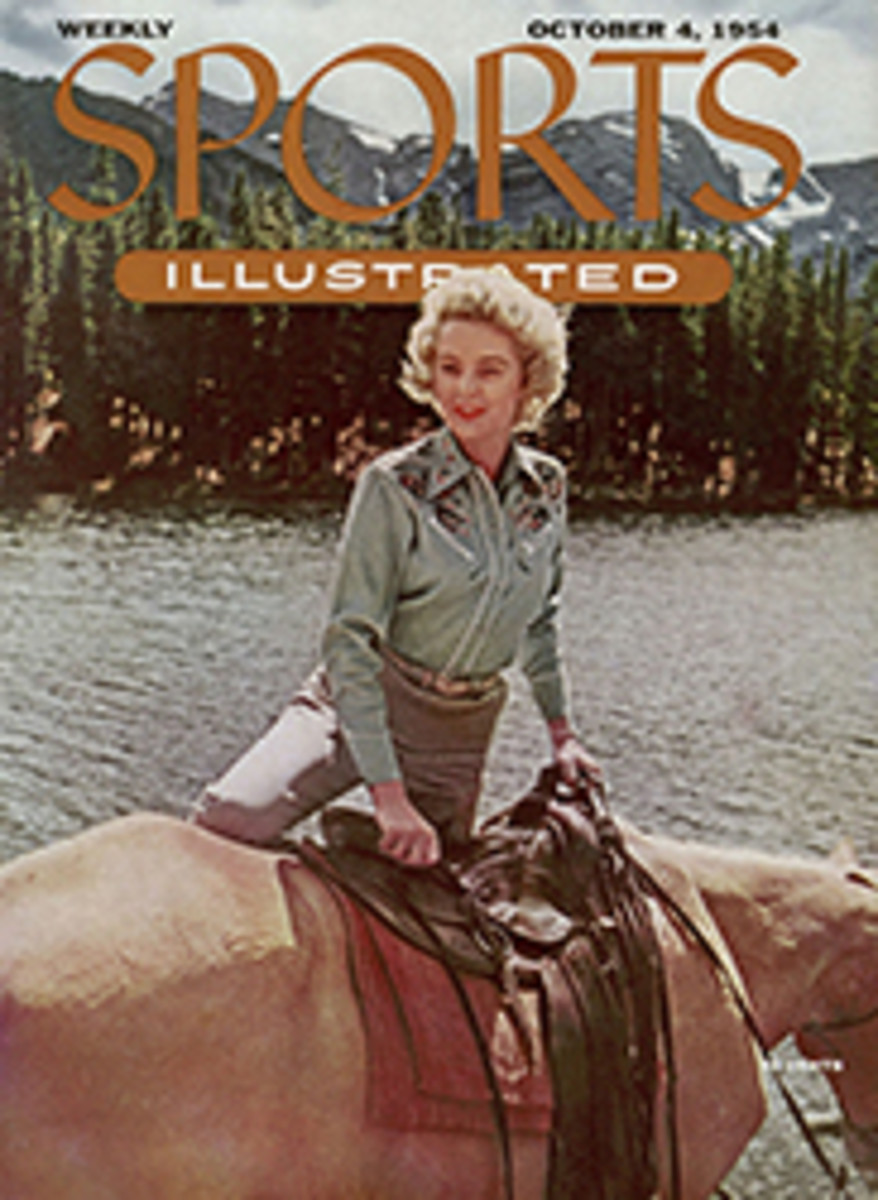
BATBOY FOR THE INDIANS
CLEVELAND
"Judging matters purely on the basis of precedence, you might easily have bet last April that the batboy least likely to get into the current World Series on the American League side would have been the one racking them up for the Cleveland Indians. Only twice before in the last 50 years has Cleveland clinched the flag, and the cold percentages would have told you that only the late St. Louis Browns could give their boy a worse chance. Nonetheless, Harold Klug from Cleveland Heights managed to make a monkey out of the statistics—with a few assists, of course, from some people named Lemon, Wynn, Garcia, Avila, Doby and Al Rosen.
Harold didn't get his batboy job through pull, the way most do in the major leagues. In Cleveland you have to earn it the hard way and you've got just a two-year career: one as batboy for the visiting team, a second as batboy for those used-to-be second-place Indians. The big job is put up for grabs by Gordon Cobbledick, sports editor of the Cleveland Plain-Dealer. Any boy within a bus fare of Cleveland, who wants to latch onto it, writes a letter to the paper around the middle of March telling why he'd like to be batboy. Judges pick 10 of them that sound interesting, and last year Harold's letter was one of the 10 chosen. Along with nine other interesting-letter writers, he was brought into the Wigwam, an eating place for the sports-writers and club officials at Municipal Stadium. There, Hank Greenberg, the general manager of the club, and George Medinger, a VP, interviewed all of them. Harold came out on top and as a net result got not only the job but $1,000 for a start on a college education (he's got Cornell and engineering in mind) as well as a terrific spring outfit from a Cleveland haberdashery.
A TOUGH JOB
About this final decision, Hank Greenberg says: "It's the toughest job I have to do all spring—to tell one boy he's won and see nine others take it on the chin."
That first year, when Harold was visiting batboy, he got nervous before big crowds. He still got nervous on opening day at Municipal Stadium, April 15, 1954, when he'd taken over as head man. "But that nervous business all died out this year," Harold claims. "By the time we hit that really big game, the double-header with the Yanks on Sept. 12, where we had more than 86,000 fans, I wasn't a bit nervous. This World Series won't bother me any."
Among the Indian champions, Harold's prime favorite is somebody you'd never guess: none other than that presumably worn-out utility veteran who's been around both big leagues practically forever—Hank Majeski.
"Hank's so friendly with everybody," Harold says. "He helps all the players, with tips, when they're in a slump. And he's helped me plenty, even though I'm not good enough to get into any slumps yet."
Harold has managed to pick up firsthand information on catching from Jim Hegan, who showed him a lot about blocking the runner off the plate and pegging to second in a hurry. Bobby Avila gave him pointers on infielding and Ray Narleski told him a lot about pitching, especially the curve ball and the sinker—two pitches with which Narleski is not totally unfamiliar.
Harold, not unlike many another young sandlotter since Mickey Mantle blossomed on the big league scene, also had ideas about making himself a switch hitter. But Dave Philley, the Indian outfielder transplanted from Philadelphia this year—and who is a working switcher himself—told him to forget it. "It's too hard to do," Philley said, "unless you start real young. Younger than you are, Harold."
ONE OF THE BIGGEST
Harold is 16, since July. He was only 14 when he got the visiting job in April of '53. He was then classed as one of the biggest batboys Cleveland ever came up with: five feet nine inches and 154 pounds. (He'd already won a letter as an end on the Kirk Junior High team outside of Cleveland.) He goes into this World Series at 176 pounds on a six-foot-even frame, and quite a lot of it pure muscle.
Leaving his favorite team out of the picture for the moment, the hitter he most likes to see in action is—who else?—Ted Williams of the Boston Red Sox. During practice, when the Sox were in town, Harold crouched by the Indians' dugout and watched the great man from Back Bay way take his cuts. "He's got a rhythm you can't really describe," Harold says. "What a hitter."
Like every member of the Indians, Harold could find no substitute for the fierce and magnificent pleasure of beating the Yankees in a game, any game at all. "We like to beat everybody in the league, sure," Harold admits. "But boy! How it feels to beat those Yanks—you just feel good all over."
However, no matter how the Indians make out with the Giants in what is unendurably called the "autumnal classic," Harold has managed to achieve a job that only two other guys in history have achieved: a Cleveland batboy, working in a World Series. The name "Klug," in German, means "smart." That might have something to do with it. But also, let's not forget the Messrs. Lemon, Avila, Wynn, Rosen, Doby—and how about that Lopez?
PHOTO
BATBOY HAROLD KLUG

